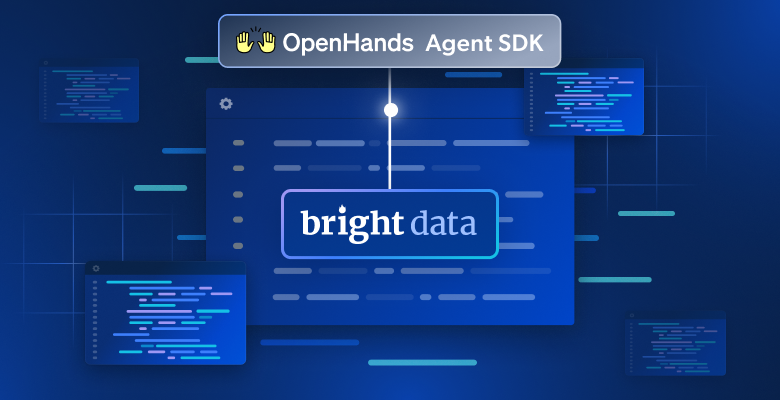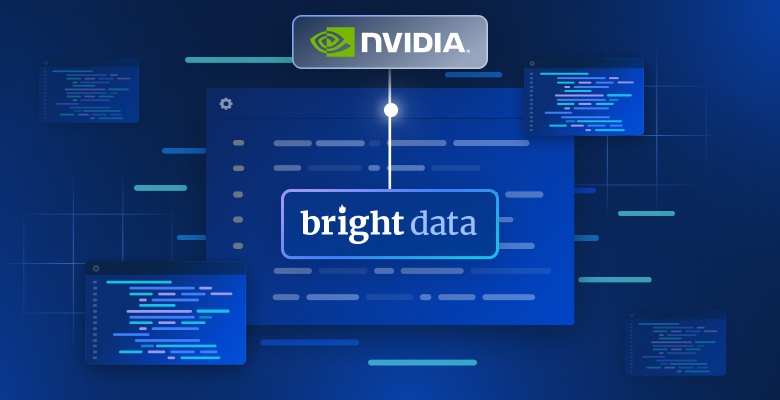With the recent uptick in frequency as well as severity of climate-related events and as a result of the past two years, many business leaders have joined the effort to tackle climate change, starting with their own sustainability strategy and moving towards global initiatives, in order to work together to build a sustainable future.
To accelerate these efforts organizations are using data and public web data to form a larger understanding of how their operations are harming the environment — looking for solutions to what they can do individually, as well as what we as a society can do collectively, to work towards diminishing our overall carbon footprint in the crucial years to come.
Data For Change
Data, like water, is an essential resource necessary for our survival. However, unlike water, the access to data, and more importantly environmental data, remains limited when it should be open and transparent like free-flowing streams of fresh water.
We’ve seen first-hand at Bright Data that civil society can benefit greatly from the open access to environmental data and public web data being shared by organizations throughout both the private and public sector.
Within these diverse datasets researchers have the ability to examine the full scope of the effects of climate change on our planet, and from there become equipped to relay recommendations that may just allow us to climb our way out of this current crisis with our beautiful breathing ecosystem still intact.
Therefore, it is of the utmost importance that we build a trust around data-sharing and define the role data will play early on to ensure researchers have the access to the resources they need to map out strategies that could be applied individually as well as collectively — whether by industry, government or individual — to help mitigate the effects of climate change on our planet, before we find ourselves crossing the Rubicon prematurely.
Past vs. Future Expectations
Since the 1970s, researchers have been employing the use of large datasets to form an understanding of the functions of the climate system.
However, with the advent of the internet, today, there is a swath of information openly and publicly available at our fingertips that allow us to form an even larger understanding of the climate than we did 50 years ago.
To provide a ballpark figure, it is estimated that we create around 2.5 quintillion bytes of data every 24 hours — that’s 2.5 followed by 18 zeros — due to an increase in web data brought upon by the coronavirus pandemic.
Public Web Data In Practice
Public web data has already proven worth in doing business, making investments, deciding strategy, educating, creating policy, driving change and even saving lives.
However, further sections of this practice are being focused to help governments keep to Net Zero pledges, businesses to reach ESG goals and even inform individuals on how to do their own personal part in saving the environment.
Notably, investment firms, governments and businesses alike are incorporating the use of alternative ESG data collection methods as a prime means of evaluating ethical, environmental and financial performance across all organizational structures.
Within the supply chain, companies use public web data to develop a clearer, transparent and more accurate picture of the environmental impact of their full supply chain — and within that are given an ability to act upon it if necessary to incorporate more greener practices.
At the UK Turing Institute, researchers decipher air pollution data from an increasing number of sensors in London — further developing machine learning algorithms and data science platforms to better estimate and accurately forecast air pollution across London.
In Denmark, imagery captured by drones are fed into a machine learning algorithm that can rapidly identify oil spills or clusters of floating debris. From there, it can deploy a squadron of special sailing drones to automatically clean it up.
And the Carbon Intensity data feed, established by the UK-based National Grid ESO, uses machine learning and power modeling to forecast the carbon-impact of electricity to people’s homes — allowing consumers to make informed decisions on their own levels of electricity use, based on the predicted energy mix and associated carbon footprint.
However, these are just a few examples of how open-sharing data resources can be used within the arena of protecting our climate.
Cooperation, Collaboration and Collective Resource Sharing
One of the more premier examples of using public web data to combat climate change comes from the world’s first non-profit accelerator that scales climate impact through data, policy and behavioral change — Subak.
The UK accelerator itself selects innovative climate-focused not for profit tech start-ups to fund, support and “maximize their impact in the fight against climate change,” according to its website.
In October of last year, The Bright Initiative partnered with Subak to support its efforts in tackling climate change, which by association helps power the climate-related projects of reputable organizations — being utilized by governments, leading news organizations, civil society efforts, reporting agencies and tech companies alike — using public web data.
Like many of the initiatives mentioned in the section above, Subak uses shared data, infrastructure and tools within its open-sourced Data Cooperative to connect the top experts in the tech, environmental and science fields to create behavioral changes and forward new policy in both the private and public sectors.
Some of the projects Subak supports include:
- New AutoMotive: An independent transport research group with a set goal to accelerate and support the switch to electric vehicles in the UK. It provides data tools as well as consumer products to map sales of EVs by manufacturer and region, as well as create budget calculators for consumers in the market for new vehicles. More notably, it helped the UK Government decide to ban the sale of automobiles that rely on fossil and diesel fuels past 2030.
- Transition Zero: A non-profit that uses satellite imagery to support investors, governments, companies and civil society manage the decline of fossil fuels and facilitate a shift to zero carbon growth opportunities using real-time data.
- Ember: A think tank that uses data-driven insights to reduce coal dependency, in the hopes of shifting towards the adoption of clean energy sources such as wind and solar, natural gas and other renewable energy.
- Open Climate Fix: Founded by one of the engineer’s behind Google’s DeepMind, the organization uses a collaborative open-source approach to reduce greenhouse gas emissions globally — incorporating machine learning technology to predict impacts on the climate system.
- Climate Policy Radar: Uses machine learning and AI to map and analyze the state of climate policy today, “giving policymakers, researchers and civil society tools for better policy design and accountability.”
Five Steps To Success:
As we strive towards creating a more sustainable future, both the private and public sector — now more than ever — need the proper access to tools, resources and information that will be able to guide them in the battle against climate change.
While there has been a clear recognition of the significant role data will play in tackling the climate crisis by the UK government, as well as other international leaders during the COP26 climate conference, there is still much that is left to be done to ensure comprehension as well as adherence of the sustainability goals that will be set before them.
Without the resources and without the data, our society doesn’t have a prayer in reassessing and reforming operations, or our lifestyles, to prevent future or mitigate current climate disasters.
This is why we need to foster a culture of cooperation now to be able to reach the sustainability benchmarks that have been set at the COP26 conference, before we see the deadlines become out of reach or unobtainable.
Therefore we laid out five steps that should lead us towards a more sustainable future:
- First and foremost, there needs to be a worldwide commitment to data sharing and ensuring environmental researchers have access to the data they need.
- Governments, public agencies and businesses alike need to be transparent and open with data sharing to meet environmental objectives – allowing full access to internal data that may be of use to researchers and scientists. This is a huge need and it’s not being addressed enough at the highest levels.
- There needs to be an unrelenting commitment to investing in innovation.
- Private and public funding needs to be directed towards supporting ground-breaking, data-driven environmental initiatives that help paint a clearer picture of the steps we need to take to reach sustainability.
- To support these steps, effort needs to be made to build data skills and literacy.
- Businesses and individuals alike need to understand the power of data as well as the value of our own personal data and how it should be used to reach green objectives.
- At local, national and international levels, efforts should be made to build and enhance data infrastructure.
- This could produce more data-intermediaries, central repositories and expand open-source data resources — giving full access to materials that may help forward current and future climate initiatives.
- Finally, and perhaps most importantly, we all need to work at building a culture of collaboration and mutual trust when it comes to data.
- It means taking every opportunity to promote not only the urgent need to apply data to the climate emergency, but also the positive impact that can be achieved with data.








